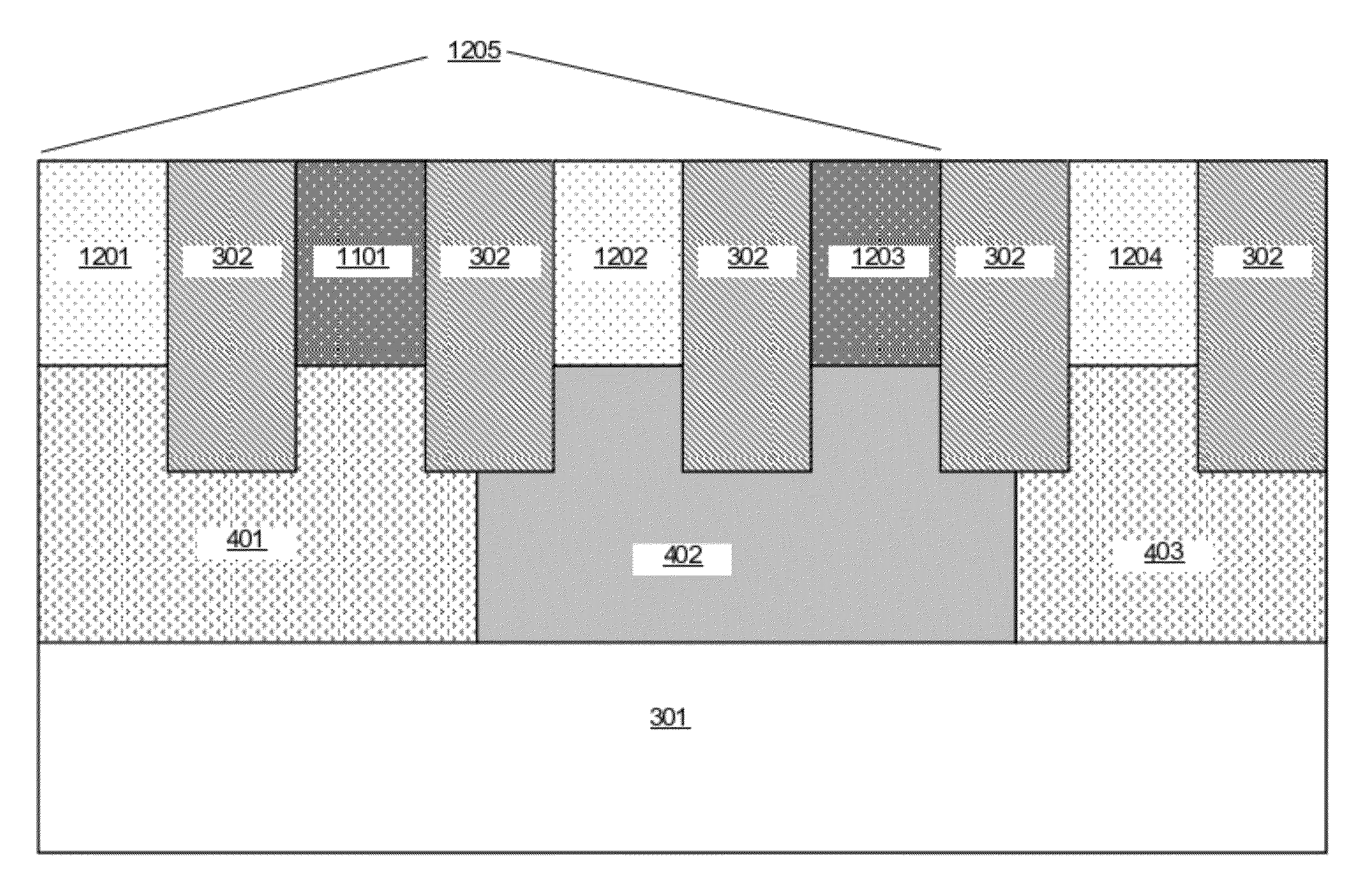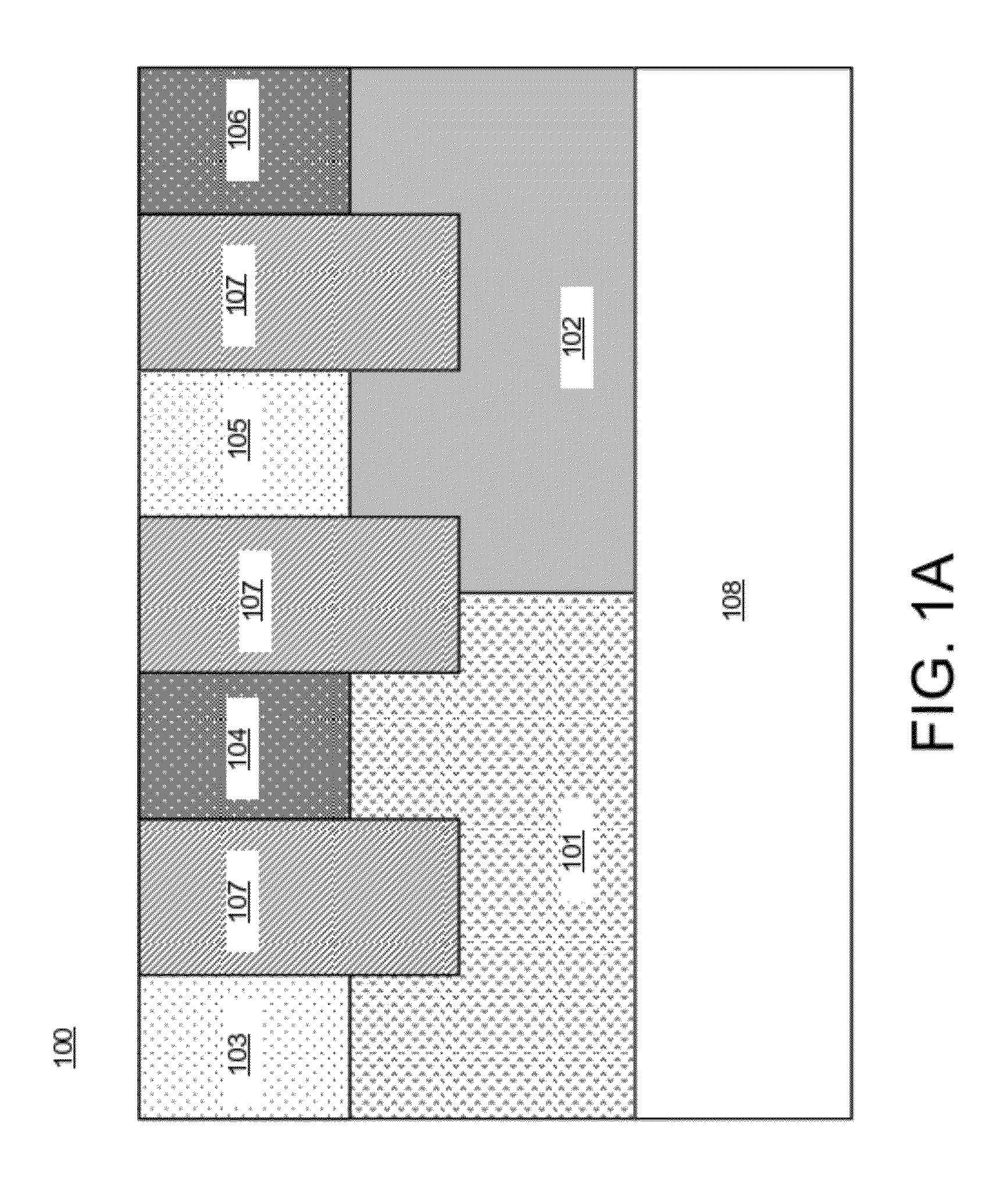Stress enhanced junction engineering for latchup SCR
- Summary
- Abstract
- Description
- Claims
- Application Information
AI Technical Summary
Benefits of technology
Problems solved by technology
Method used
Image
Examples
first embodiment
[0026]application of method 200, in which a latchup SCR with an eSiGe p+ region in the n-well is formed, begins in block 201 with formation of STI regions, n-wells and p-wells on a substrate. A substrate 301 after formation of STI regions 302 is shown in FIG. 3. Substrate 301 comprises a silicon substrate, and STI regions 302 include a dielectric material such as oxide. Then, n-well 402 and p-wells 401 and 403 are formed in the substrate 301 as is shown in FIG. 4. Formation of n-well 402 and p-wells 401 and 403 may be performed using any appropriate technique, such as implantation of the n-wells and the p-wells with appropriate respective n-type and p-type dopants, followed by a rapid thermal anneal (RTA). Then, in block 202, a junction engineering mask is applied to the IC. The junction engineering mask exposes a p+ region in any latchup SCRs on the IC, so that stressed enhanced junction engineering may be performed in the exposed p+ region. The junction engineering mask covers ESD...
second embodiment
[0028]application of method 200, in which a latchup SCR with a SiC n+ region in the p-well is formed, begins in block 201 with formation of STI regions, n-wells and p-wells on a substrate. A substrate 301 after formation of STI regions 302 is shown in FIG. 3. Substrate 301 comprises a silicon substrate, and STI regions 302 include a dielectric material such as oxide. Then, n-well 402 and p-wells 401 and 403 are formed in the substrate 301 as is shown in FIG. 4. Formation of n-well 402 and p-wells 401 and 403 may be performed using any appropriate technique, such as implantation of the n-wells and the p-wells with appropriate respective n-type and p-type dopants, followed by a rapid thermal anneal (RTA). Then, in block 202, a junction engineering mask is applied to the IC. The junction engineering mask exposes an n+ region in any latchup SCRs on the IC, so that stressed enhanced junction engineering may be performed in the exposed n+ region. The junction engineering mask covers ESD S...
PUM
 Login to View More
Login to View More Abstract
Description
Claims
Application Information
 Login to View More
Login to View More - R&D
- Intellectual Property
- Life Sciences
- Materials
- Tech Scout
- Unparalleled Data Quality
- Higher Quality Content
- 60% Fewer Hallucinations
Browse by: Latest US Patents, China's latest patents, Technical Efficacy Thesaurus, Application Domain, Technology Topic, Popular Technical Reports.
© 2025 PatSnap. All rights reserved.Legal|Privacy policy|Modern Slavery Act Transparency Statement|Sitemap|About US| Contact US: help@patsnap.com



